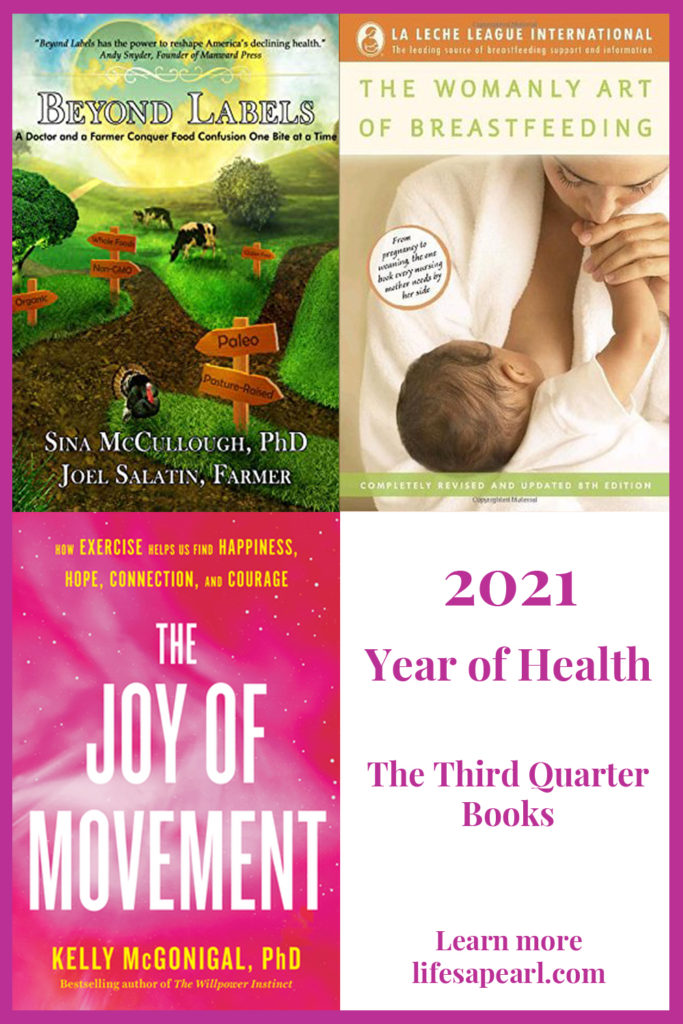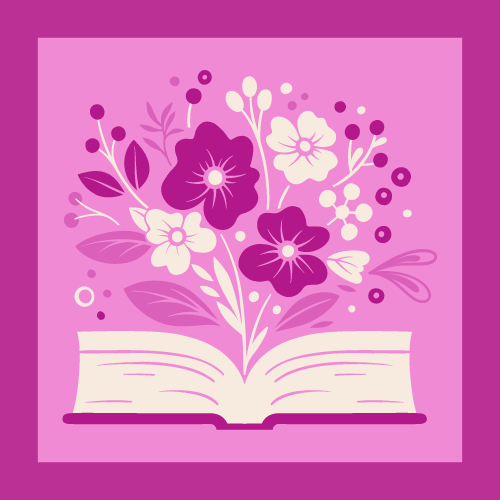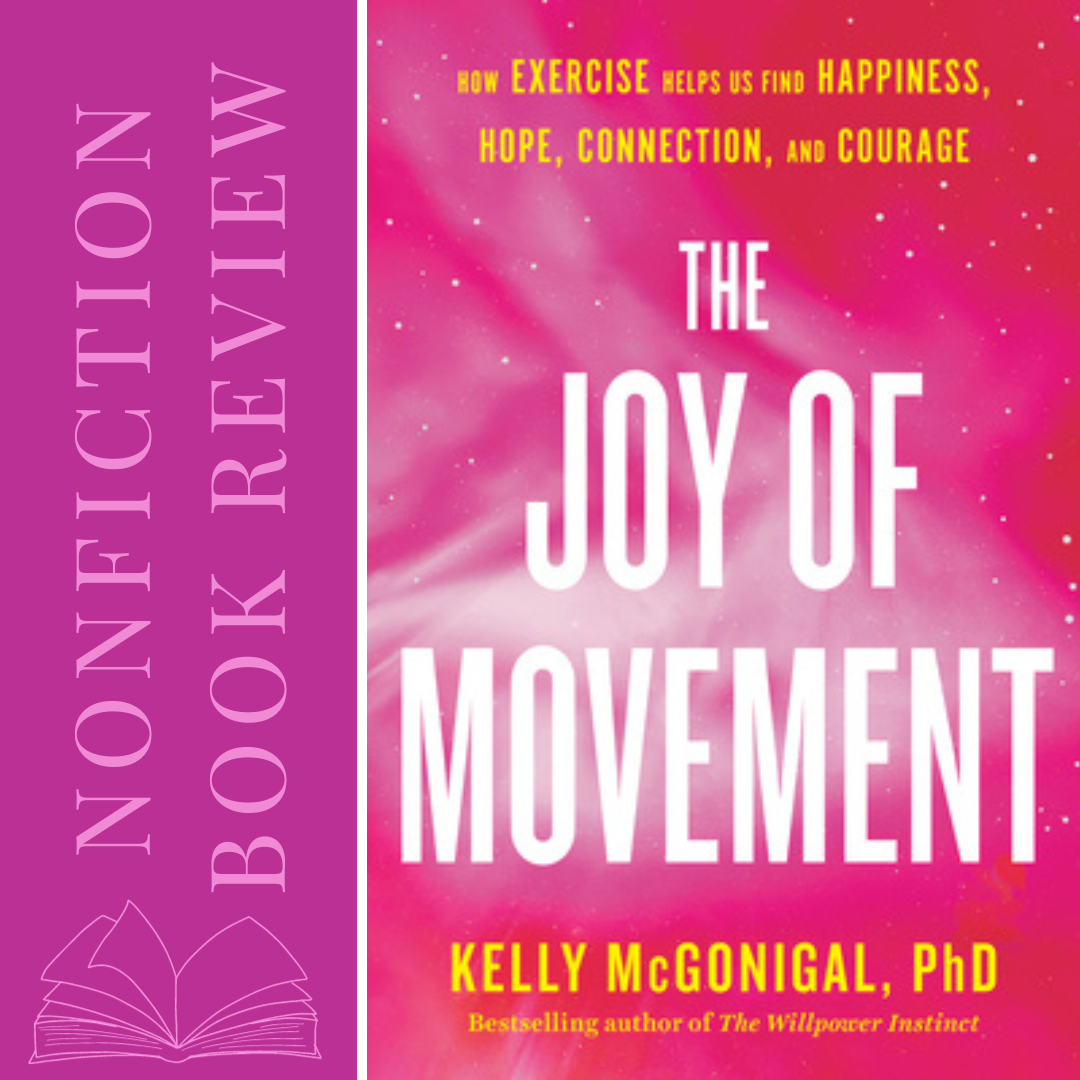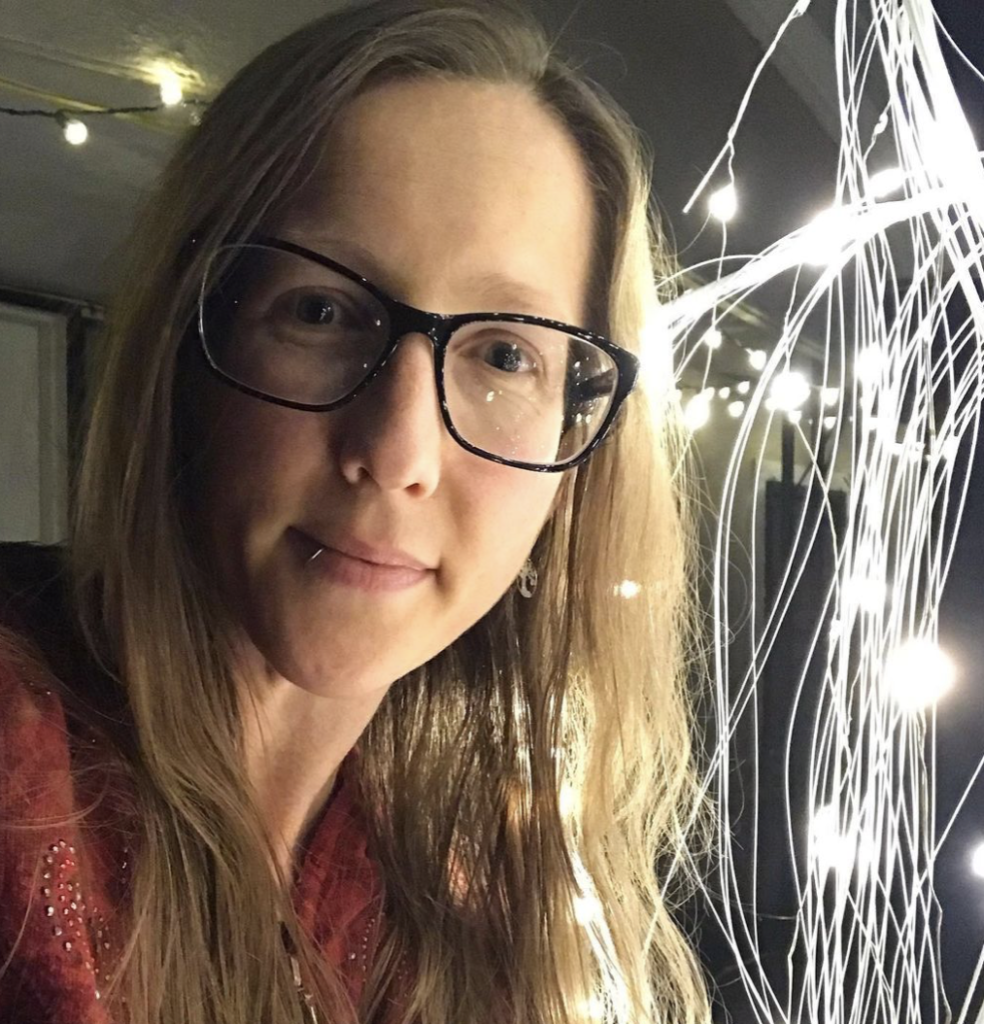For 2021, I decided to take on a year of health project rather than making New Years resolutions. While I have the best of intentions at the start of every year, my resolutions never seem to last for long.
The idea behind this experiment is to explore a new health topic for each month of the year. These topics could include anything from nutrition to stress management to exercise to social connections.
Each month I choose a nonfiction book to read in the first half. Then I try to implement what I’ve learned in the second half of the month.
So far this year I’ve read about cutting out sugar, relationships, and how nutrition affects our genes. In the second quarter, I learned about sleep, multipotentialites, and the connection between nature and health. The third quarter began with a very informative and timely book about going Beyond Labels and taking responsibility for your food sources and security.
August Topic: Exercise
While I have a pretty active lifestyle by most standards, devoting time to regular exercise is not one of my strengths. I don’t have a gym membership and weight lifting type exercises aren’t appealing to me. Neither are competitive sports. I’ve dabbled in phases of running but I prefer to do it outside rather than on a treadmill and haven’t been tempted by the steep hills and canyons that make up our neighborhood.
This time of year has presented other challenges to being active, mainly being eight months pregnant during one of the hottest summers on record with this month bringing weeks of heavy smoke settling in around us. I’m still walking, gardening, and doing yoga type stretches and exercises to prepare for birth, but I’ve definitely slowed down both in the speed I do things and the amount of activity.
When I was thinking about my third quarter book picks, I thought this might be the time of year that I needed to be reminded of the many benefits to health from regular physical activity. I was interested in learning more about these positives from an overall health and happiness viewpoint rather than the optimal fitness or weight loss approaches to exercise.
The Joy of Movement: How Exercise Helps Us Find Happiness, Hope, Connection, and Courage seemed like a great place to start!
Review: The Joy of Movement by Kelly McGonigal, PhD
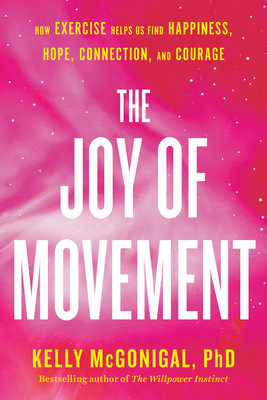
The Joy of Movement by Kelly McGonigal, PhD is definitely her love story to any and all forms of physical movement. McGonigal writes, “Movement offers us pleasure, identity, belonging and hope. It puts us in places that are good for us, whether that’s outdoors in nature, in an environment that challenges us, or with a supportive community. Movement allows us to redefine ourselves and reimagine what is possible. It makes social connection easier and self-transcendence possible.”
McGonigal pulls from her own personal experiences as a exercise class teacher and lifelong devotee to physical activity. She interviews people around the world to share how regular exercise can help people recover from loneliness, grief, and depression. She demonstrates all the ways that exercise can be a source of joy rather than another chore.
The Joy of Movement combines anecdotes with anthropology studies, neuroscience findings, and positive psychology to explore the benefits of movement to our lives, nature, and society. She looks at human evolution and the purpose of movement in helping humans survive, learn to cooperate, and thrive. All around the world, in different cultures the universal benefits of movement can be observed and give us pathways to finding purpose and social connection.
Some Interesting Takeaways:
- Physically active people from all over the world are happier and more satisfied with life. This applies whether their activity is running, playing a sport, weight lifting, swimming, walking, or yoga. They are also more connected to their communities and have a stronger sense of purpose.
- The benefits and joy that active people experience is connected to movement itself not fitness.
- Physical activity influences your brain chemistry. It can increase energy, ease worry, and connect you with others. It helps protect against depression and anxiety by reducing inflammation in the brain.
- Evolution encouraged these benefits of physical activity. Movement was how humans participated in life, interacted with the world, and formed connections with each other. Whether through work or play, movement was how people connected, collaborated, and celebrated.
- Exercise gives a “persistence high” not a runner’s high. Anything that is moderately difficult for you and kept up for at least 20 minutes is enough to trigger this reward.
- Studies suggest that exercise can reverse the anti-reward system (that takes over in the brains of drug addicts) and reawaken a numbed reward system.
- Humans naturally synchronize body rhythms. From breathing to heartbeat to exercise movement, when one person feels connected to another, they unconsciously sync up and more accurately than computers can imitate.
- Music can be supportive for endurance athletes. When the brain hears a song it likes, it releases a rush of adrenaline, dopamine, and endorphins that offer energy and pain relief. The endorphins that are released can make the task at hand easier and also help bond a group working together.
- Green exercise is any physical activity that happens in a natural environment. Similar to The Nature Fix’s findings, five minutes of movement in nature shifts mood and outlook in a positive direction.
Quotes from The Joy of Movement:
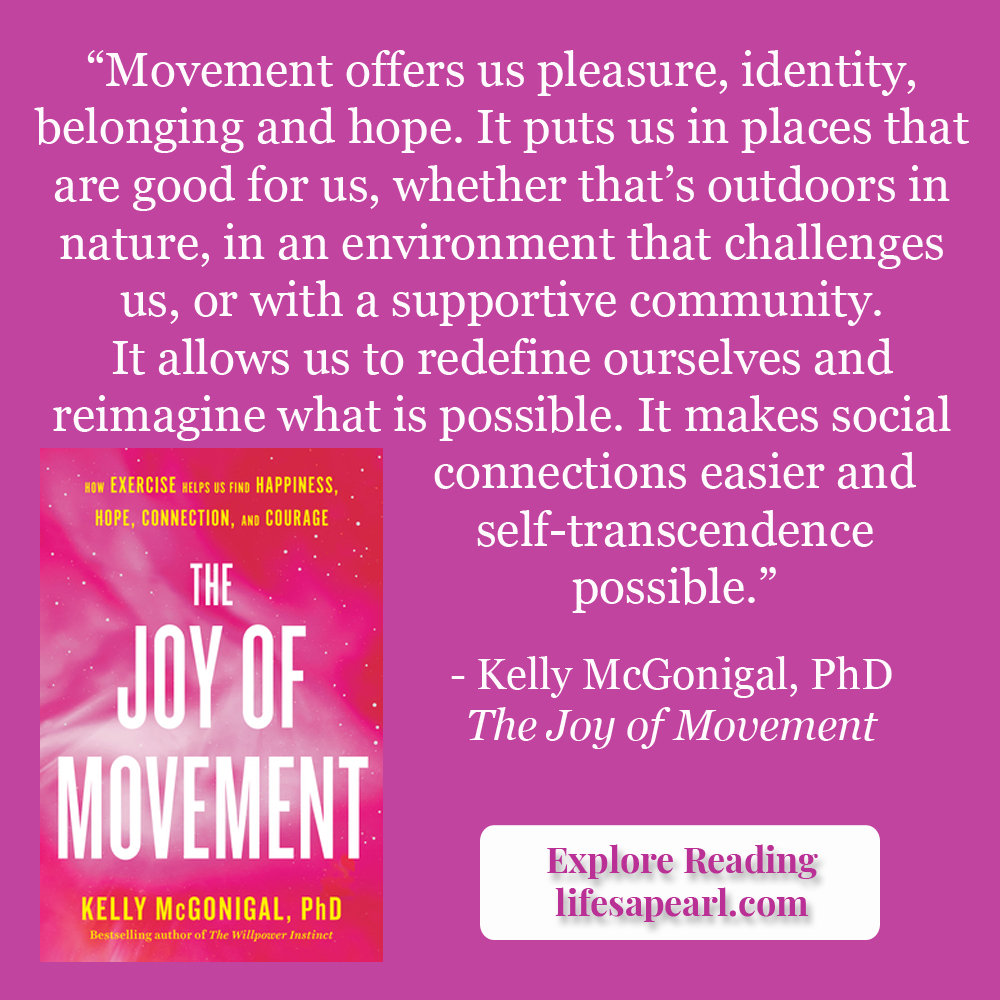
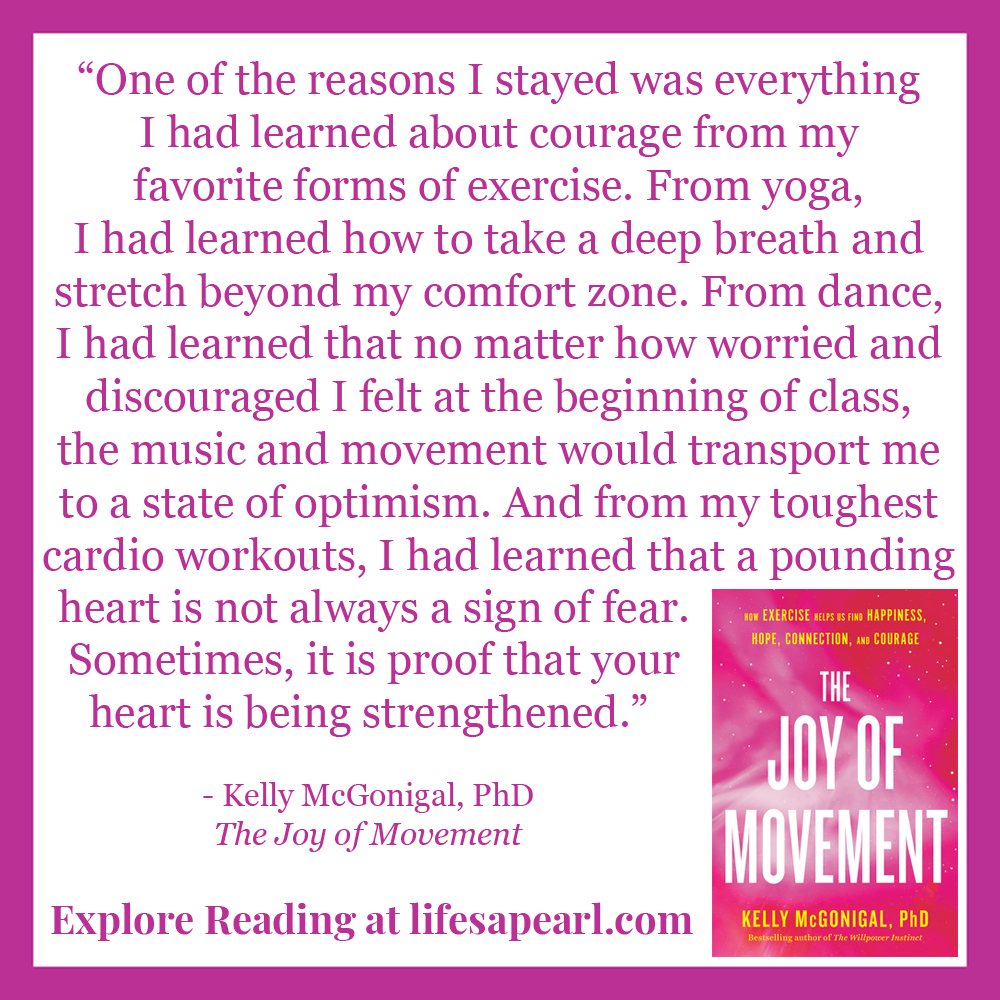
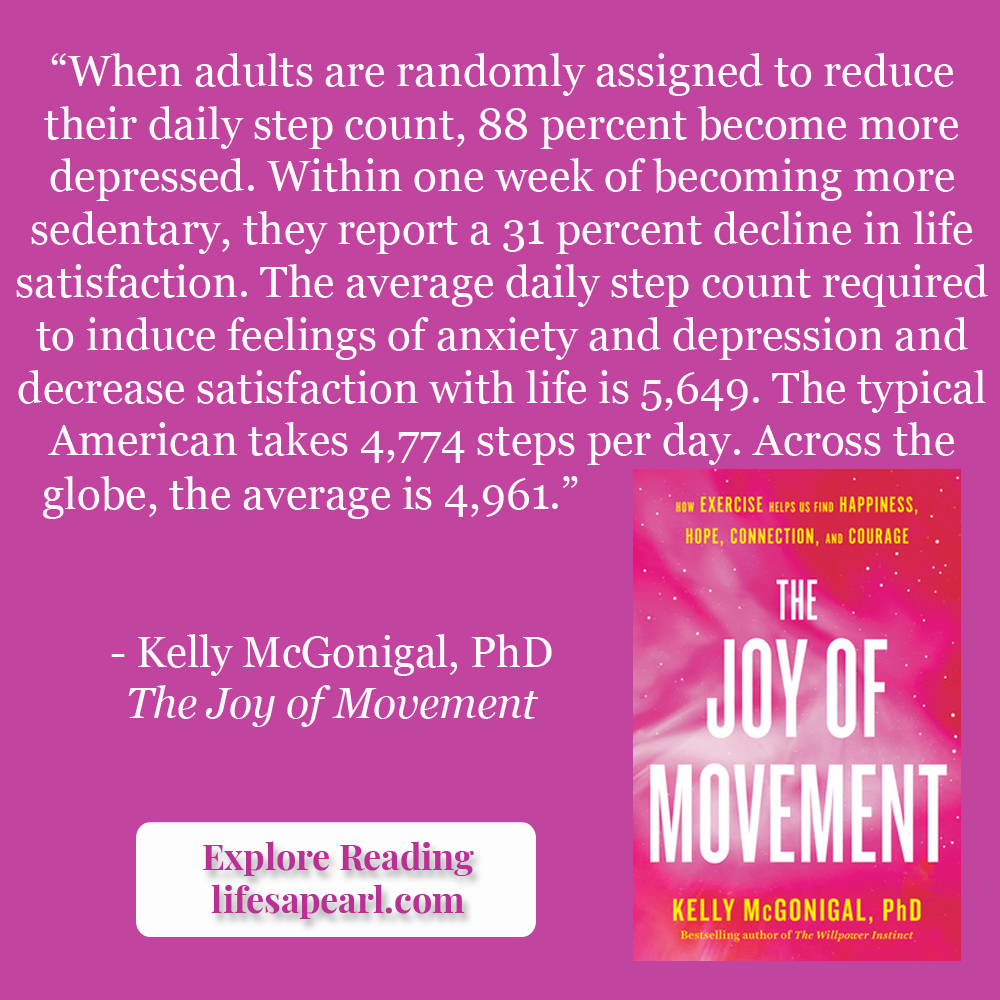
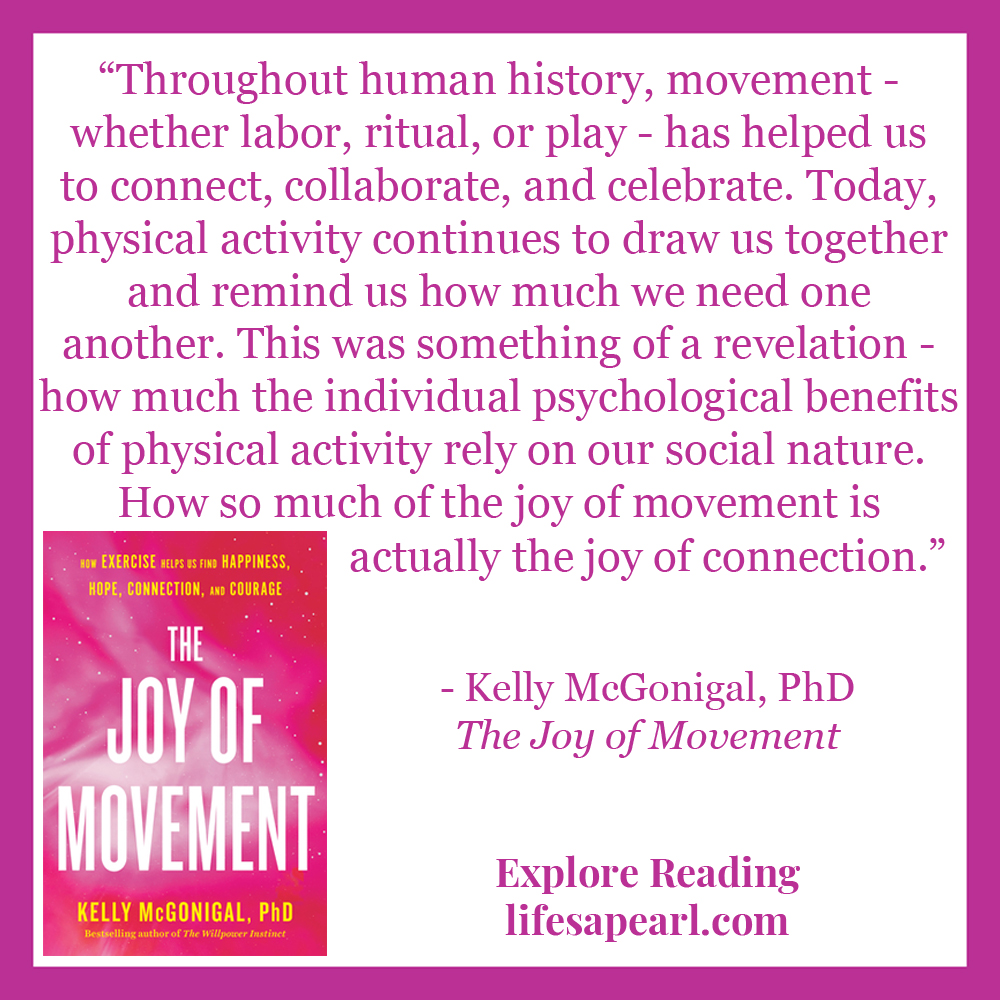
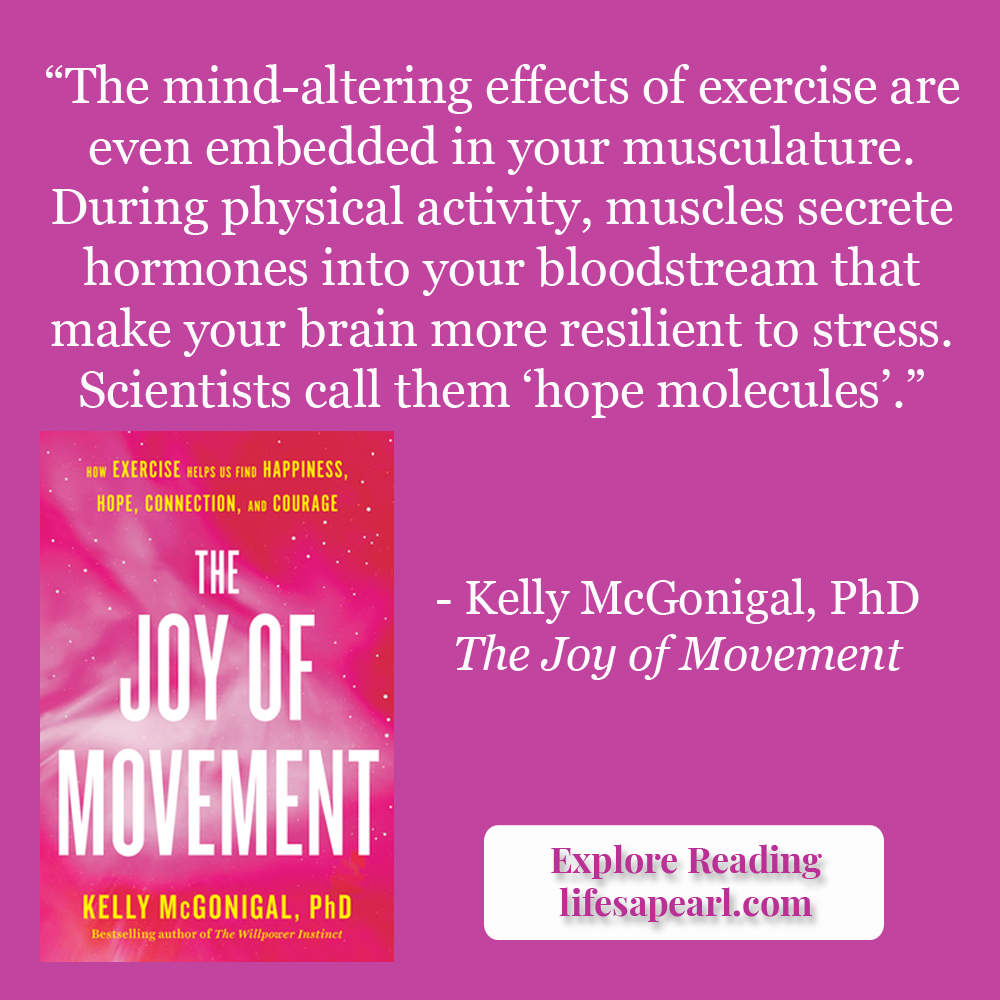
Final Verdict:
My library loan for this came in as an audiobook first so I listened to it that way. Then I reread it when the ebook loan came through. I don’t think I’ll try that again. As far as my year of health picks go, I feel like I get more information when I’m able to read through them in smaller chunks in the first couple weeks of the month.
I really enjoyed this different perspective on exercise. I appreciated the author’s love for any form of movement since I often gravitate toward gentler forms like yoga. The emphasis on the overall benefits for all aspects of health and life was also a nice approach. I would not have enjoyed a book that just focused on the physical pay off as much.
I found the anthropological studies and theories on how humans evolved with the necessity of cooperation through movement to be fascinating! It made me think about exercise as collective effort and social connection in a way I never had before.
This book was very inspiring. While I don’t feel the same passion and love for all forms of exercise as the author does, it made me appreciate the power of physical activity. It also made me feel better about the small walks and stretches that I’m still making an effort to do. It’s easy to feel like those aren’t “enough” because I’m not working hard enough or fast enough. Sometimes it’s enough to take the time to be in touch with your body.
Book Pick for September

I had to switch to a different pregnancy book for September. When I chose my third quarter reading line up I was still hoping to have a low intervention vaginal birth. But my baby has been determined to teach us early that we have little control over such things. After spending a lot of time inverted to get him to turn, this stubborn guy just wants to stay sideways, so it’s looking necessary to go the cesarean route for his safety and mine.
I hope to read Ina May Gaskin’s Guide to Childbirth still one day. But with the somewhat negative views on medical intervention and cesareans, now is obviously not the right time for me. I want to keep a positive mindset for a safe beautiful birth experience and healthy outcome no matter how my baby enters the world
September’s topic now focuses on breastfeeding rather than natural childbirth with The Womanly Art of Breastfeeding by Diane Wiessinger, Diana West, and Teresa Pitman, three founders of La Leche League. This guide to breastfeeding offers in depth information, support, troubleshooting advice, and further resources to new moms.
What are your favorite forms of movement? How do you feel exercise benefits your life?

